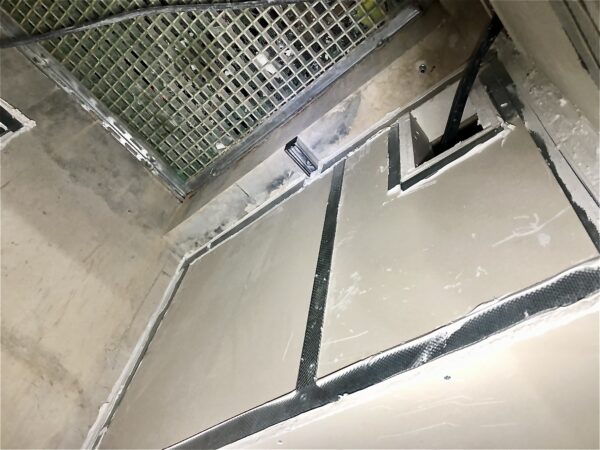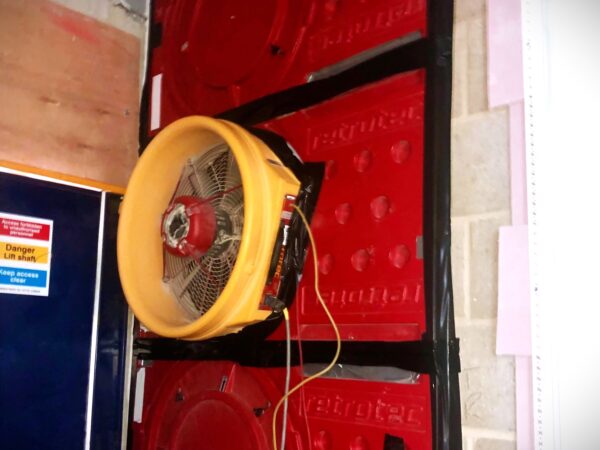There is a number of Smoke Shaft Air Testing Regulations and Standards for Automatic Opening Vent (AOV) smoke shafts. Here’s a summary of the main regulations and standards:
Approved Documents:
- The Approved Document B – this provides guidance on fire safety and mentions the role of AOV systems in facilitating evacuation by clearing smoke. It’s important to refer to the latest version of this document for detailed guidelines.
- BS EN 12101-2:2006 – AOV smoke shafts must comply with standards such as BS EN 12101-2:2006, which covers the design of smoke ventilation systems.
- BS EN 9991 (2015) – Fire Safety in the design management and use of residential buildings.
- Smoke Shaft Testing Requirements: all tests are carried out in accordance with the requirements of ATTMA TSL Issue 1, CIBSE T23:2000, BS EN 13829 and BS EN 12101-2:2006.
- Smoke Shaft Testing Frequency: Annual air testing is required to ensure the AOV smoke shafts are running correctly.
- Air Testing Body: The air test to the smoke shafts should be carried out by a Level 2 ATTMA member, Level 1 IATS, or a UKAS accredited testing laboratory.
- UKAS Calibrated Equipment: Testing should be carried out using UKAS calibrated equipment to meet ISO 17025 air permeability standards.
For the most accurate and up-to-date information, it’s recommended to consult the official documents and any recent amendments provided by the UK government and relevant authorities for air testing AOV Smoke shafts.

Air pressure testing methodology for smoke shafts
To confirm that builders shafts are sufficiently air test for smoke ventilation systems to operate effectively.
Air testing is conducted on shafts that have been created in a stair/lift core to ensure they are sufficiently air tight to allow Mechanical Automatic Opening Ventilation to extract smoke from escape/access routes in the event of a fire.
The testing is to ATTMA Technical Standards or CIBSE TM23 based on a target of less than 3.8 m3.h-1.m-2@50Pa using the following methodology:
- Check the smoke shaft is fully prepared for the test, with top of the shaft temporally sealed, along with the AOV opening at each floor.
- Find a suitable door for the test approx. half way up the shaft if possible.
- Set up the fan system within the door aperture the fan system should be sized correctly to pressurise the shaft to 70pa at 8m3/hr/m2. In many cases a smaller duct blower fan system fan may not have the capacity to undertake the test.
- Undertake the measurements in 5pa increments from 25pa to 70pa as well as the environmental measurements.
- If the smoke shaft passes with results less than the required 3.8m3/hr/m2 carefully pack away the equipment.
- Send across the air tightness test report to the client.
- If the smoke shaft air test fails, undertake a smoke leakage test and/or a thermal imaging survey to highlight the air leakage paths within the building envelope and forward the findings to the client so they can undertake targeted remedial sealing works.
- Undertake a final air tightness test to the smoke shaft and send across the air test pass report to the client.

We can help you pass your smoke shaft air tightness test
We have been undertaking AOV smoke shaft testing throughout London and the South-East, on many prestigious projects such as Battersea Power Station, The Imperial War Museum and Claridges and Berkeley Hotel. Our experienced engineers at Air Pressure Testing have over 10 years in the field of smoke shaft testing, so we know how to help clients to pass their testing and achieve smoke shaft signoff. It’s APT’s aim to provide a friendly and professional stress-free experience for all your smoke shaft testing requirements.
for further guidance on AOV smoke shafts, please check out the Colt Smoke Control in Apartments Leaflet, available as a free download from www.coltinfo.co.uk. SCA “Guidance on smoke control to common escape routes in apartment buildings”, is also available as a free download from www.FETA.co.uk
if you have any questions in regards to smoke shaft testing on your project, please contact Darren on 07775623464 or email us at info@aptsoundtesting.co.uk
